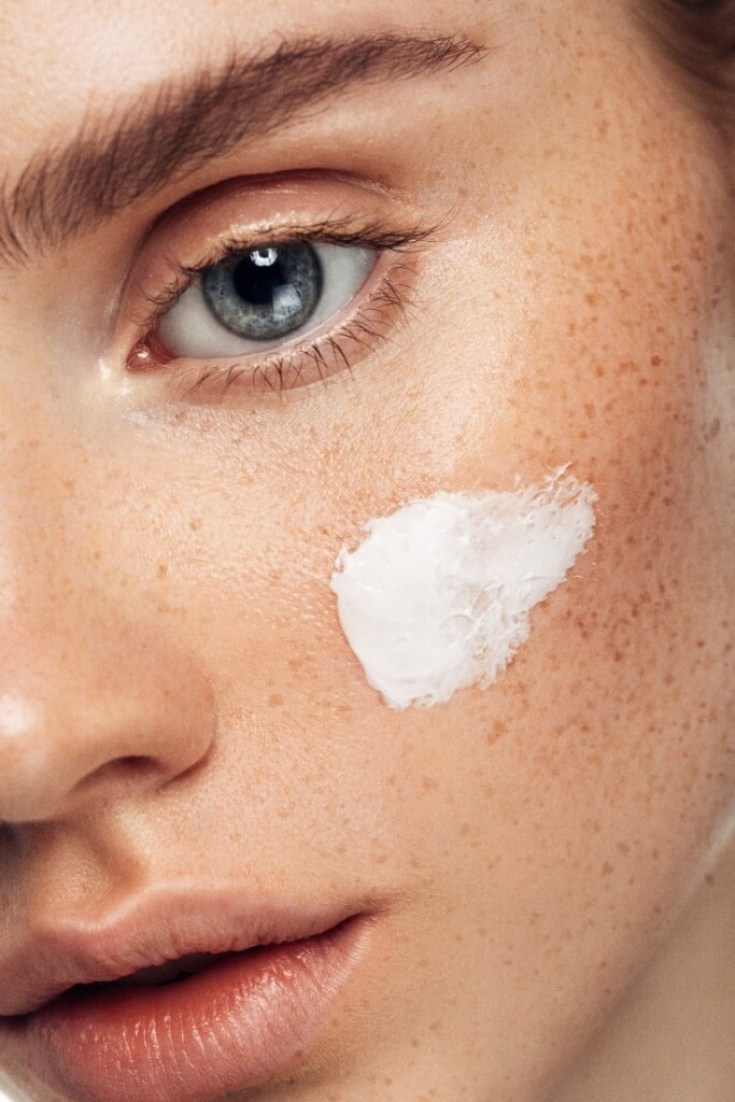Retinoids such as retinoic acid and retinol are widely used in the treatment of skin aging. Retinoic acid was first described as an effective treatment for photoaging in a clinical study in the mid-1980s. At the moment, products with retinol and retinoic acid & nbsp; are actively used both at home and in the offices of aesthetic medicine.
In the article onestet-portal.com you will learn about the mechanisms of action of retinol and retinoic acid, as well as the effectiveness of the two products in comparison.
- Effects of retinol and retinoic acid
- Changes in gene expression after treatment with retinol and retinoic acid
- The effect of retinol and retinoic acid on the appearance of facial skin
- Conclusion
Effects of retinol and retinoic acid
The anti-aging effects of retinol include inhibition of UV induction of matrix metalloproteins and also promote collagen synthesis in photoaggregate skin. In clinical studies, retinol treatment significantly corrected fine lines.
It is generally accepted that retinol is not as effective as retinoic acid due to the extra step required to convert retinol to retinoic acid. However, very few studies have been reported directly in comparison of these two compounds.
Skin biopsies were obtained from 6 healthy adult volunteers (3 males and 3 females, age 35-55 years). Retinoic acid (0.1%) and retinol (0.1%) were topically applied to the forearms. After 4 weeks of treatment, a full thickness (4 mm) skin biopsy was obtained from each site.
Epidermal thickening after treatment with retinol and retinoic acid:
Hematoxylin and eosin-stained sections from biopsy specimens obtained from six subjects after a 4-week treatment period were analyzed to assess epidermal thickening. All subjects had a thickened epidermis after treatment with retinol and retinoic acid compared to the control group.
Features of the use of drugs with retinol.
According to visual observations of the samples, quantitative measurement of the epidermal layer of biopsy tissue sections after treatment with retinol and retinoic acid showed an increase in epidermal thickness over control values of 46.28% and 78.79%, respectively. Confocal imaging-based epidermal thickness, measured from the stratum corneum to the top of the dermal papilla, increased by 20.03% and 33.68%, respectively, over control values after treatment with retinol and retinoic acid. Changes in gene expression after treatment with retinol and retinoic acid
To elucidate the molecular mechanism that causes skin changes, the expression of 12 genes involved in skin function must be considered. Six genes showed statistically significant changes and six others did not show statistical significance, partly due to the small number of subjects. Overall, the results show a trend towards increased expression of most of these genes after treatment with retinol and retinoic acid.
Possibilities of modern retinoids in anti-age therapy. For example, an increase in gene expression after treatment with retinol and retinoic acid affected the COL1A1 and COL3A1 genes, which code for procollagen I and procollagen III, respectively. The increase in the expression of the COL1A1 and COL3A1 genes was 1.34 and 1.43 times compared with the control after treatment with retinol, as well as 2.48 and 2.77 times changes in control after treatment with retinoic acid, respectively.

Influence on protein synthesis of procollagen I and procollagen III after treatment with retinol and retinoic acid:
After increased expression genes COL1A1 and COL3A1, worth considering protein synthesis of procolallagen I and procolallagen III using immunohistochemical staining. The results demonstrate an increase in both proteins after treatment with retinol and retinoic acid, primarily in the papillary dermis.
Retinol and retinoic acid showed a similar increase in protein synthesis of procolallagen I, more protein synthesis for procolallagen III was observed after treatment with retinoic acid compared with retinol.
Overall, both retinol and retinoic acid increased the new synthesis ofcollagen in the skin.
The effect of retinol and retinoic acid on the appearance of facial skin Analysis of skin biopsy showed that the use of both retinol and retinoic acid leads to thickening of the epidermis, increased expression of genes associated with skin functions. Based on these results, it was studied effect of retinol 0.1% for mimic wrinkles.
Images were acquired from women during a 12-week retinol treatment period, and the degree of expression lines were analyzed using the FACES software. Wrinkle scores were calculated to evaluate both the number of wrinkles and their severity. The analysis showed a significant reduction in expression lines after treatment with retinol over a 12-week period. Wrinkles were reduced by 63.74% on the cheeks and 38.74% in the eye area after 12 weeks of treatment.
Conclusion In conclusion, this study shows that topical application of retinol significantly affects the cellular and molecular properties of both the epidermis and dermis, as evidenced by non-invasive imaging analyzes and skin biopsies. Treatment with retinol causes similar changes in skin histology, also associated with protein gene expression, as does the use of retinoic acid.
Watch us on YouTube.





